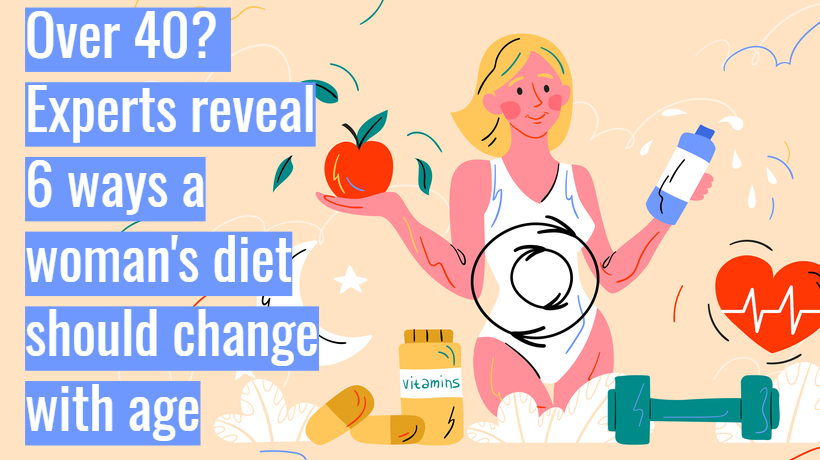Everyone wants a fast metabolism. But as we get older, our dreams of having a speedy metabolic rate can become harder to reach. Bodily changes in blood vessel elasticity, muscle mass, and hormone levels all can have a huge influence on our basal metabolic rate, making it harder to maintain the same speedy metabolism we enjoyed in our youth. Although you may not be able to control your age or genetics, there are simple dietary changes you can make to improve your metabolism.
“The good news is that what we eat—something we all do each day—can make a big and lasting impact,” nutritionist and author Maggie Moon tells Prevention.
Here are 6 easy switches you should make to your meals in your 40s to keep your metabolism (and figure) in check:
Increase Your Calcium Intake
“As estrogen production decreases in aging women, it becomes harder to absorb calcium,” explains nutritionist Rebecca Scritchfield, author of Body Kindness. Studies have shown that in post-menopausal women, calcium absorption levels took a serious dip. “Women over the age of 50 should aim for roughly 1,200 milligrams of calcium daily, and women in their 40s should shoot for around 1,000 milligrams calcium per day,” says Scritchfield. Many cereals, plant-based milks, and leafy greens are all good sources of this essential nutrient.
Say “No” To Sodium
Sodium is a major component of our food supply, but not just in our favorite salty snacks. “Many people don’t realize, for example, that a serving of salted peanuts contains the same amount of sodium in a slice of bread or a cup of milk,” explains Andy Bellatti, a Las Vegas-based nutritionist and the strategic director of Dietitians For Professional Integrity in an article for Prevention. Research has also shown that reducing our sodium intake can help improve our metabolic rates as we age. “Bloating is very common during menopause, and a high-sodium diet can not only exacerbate bloating but also be a major contributor in the first place,” says Bellatti. “This is where label reading is key; don’t rely on how salty a food tastes.”
Eat Oily Fish Twice A Week
“EPA and DHA are omega-3s found in fish and fish oils that you need to keep your brain, heart, and eyes healthy as you age,” nutritionist Christy Brissette, president of 80 Twenty Nutrition, says. So if you haven’t already, it’s time to start eating more omega-3-rich fish like salmon, mackerel, sardines, trout, and herring.
Give In To Quinoa
According to WebMD, once you hit your thirties, women can lose as much as 3% to 5% of their muscle mass every decade, making it difficult to keep a speedy metabolism. With 8 grams of quality protein per cup (185 grams), quinoa is an excellent plant-based protein source, especially for women who abstain from meat. Incorporating more of the trendy, edible starchy seed into your diet can help keep energy levels steady and ward off crashes.
Eat More Soy
Many women avoid soy-foods like edamame, tempeh, and tofu as a result of myths about soy’s link with breast cancer. However, there is very little hard evidence to support this claim. “These foods are rich in plant estrogens which can help reduce hot flashes,” explains Scritchfield. Moreover, soy-rich foods have also been shown to lower the risk of heart disease and osteoporosis.
Hydrate!
Our bodies need water to process calories. If you are even mildly dehydrated, your metabolism may slow down. Many studies show that drinking more water may benefit weight loss and maintenance. To stay hydrated, many health authorities recommend drinking eight, 8-oz glasses of water (about 2 liters) per day.



